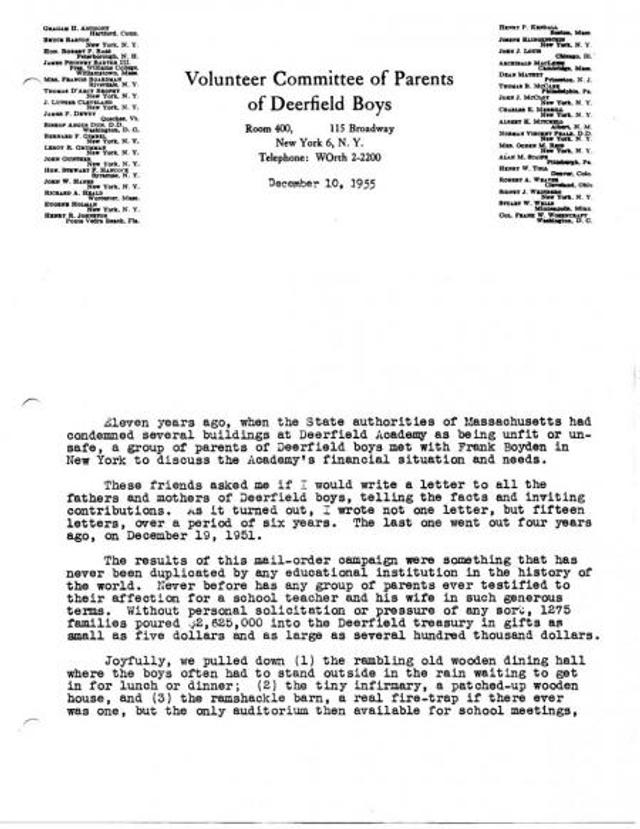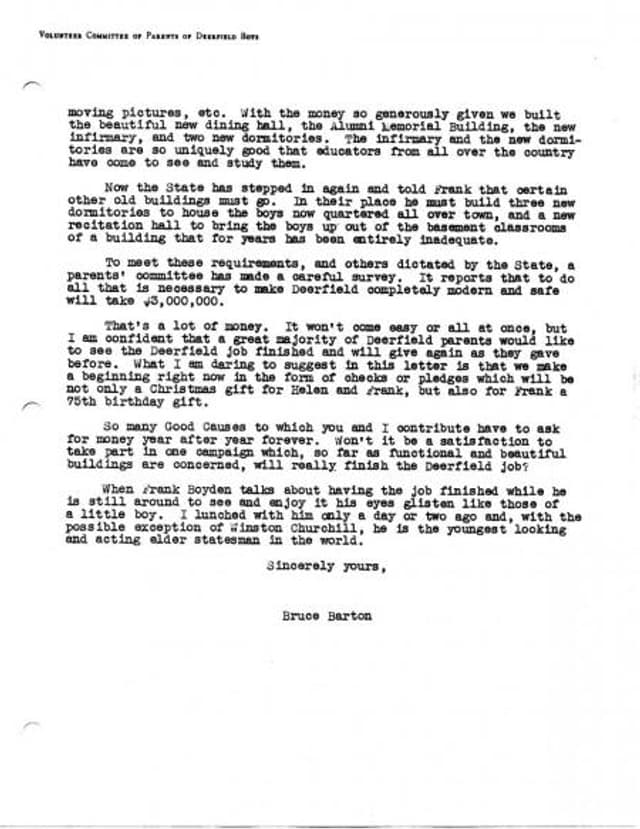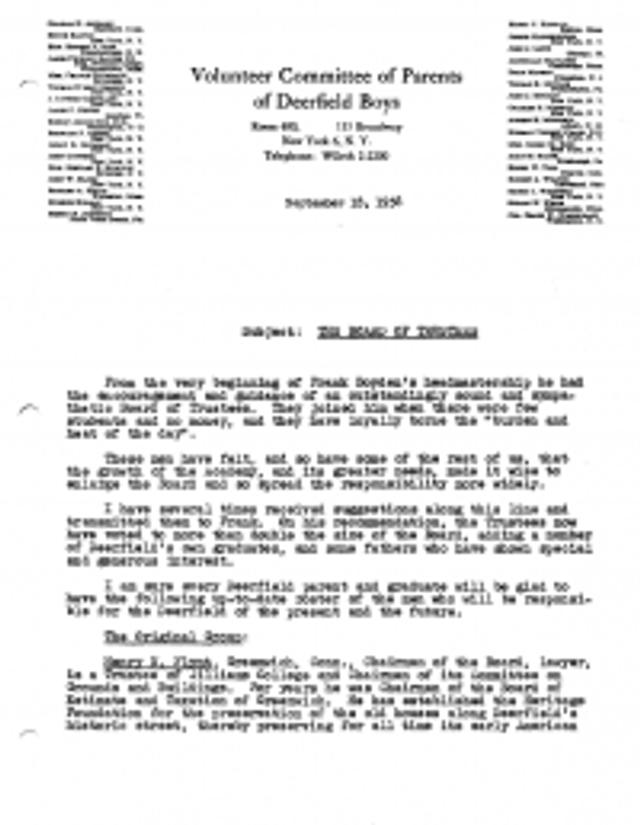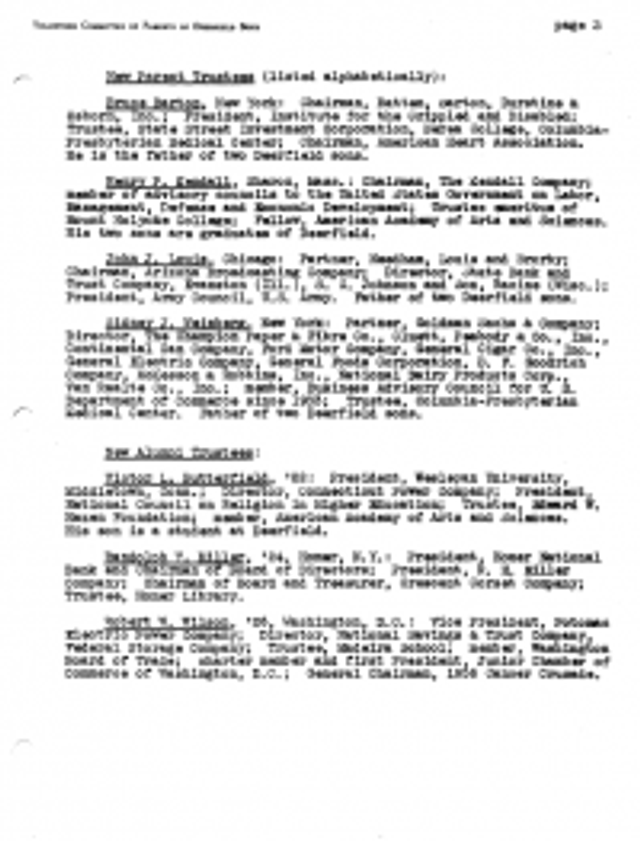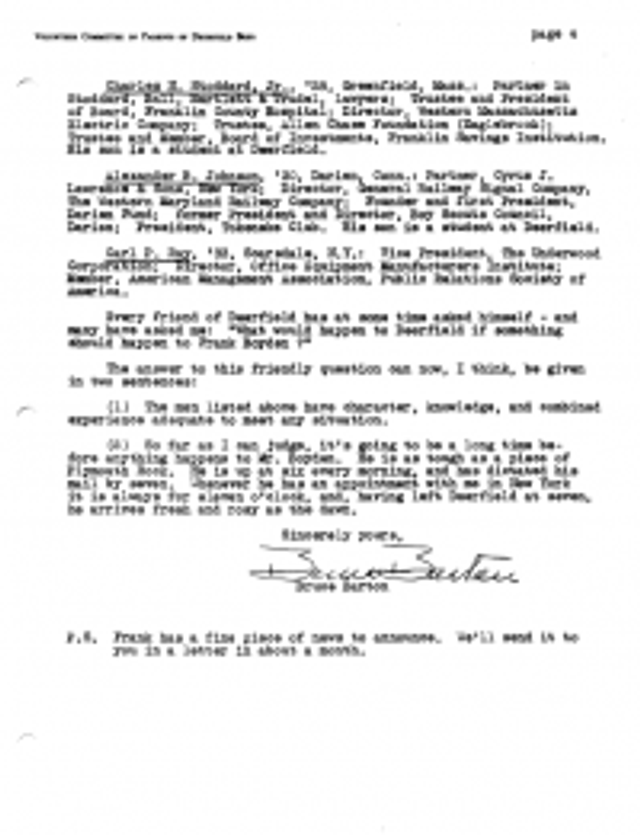Deerfield Academy: Bruce Barton’s fundraising letters from 1955 and 1956, letters 16 and 17
- Exhibited by
- SOFII
- Added
- June 23, 2011
- Medium of Communication
- Direct mail.
- Target Audience
- Individuals.
- Type of Charity
- Children, youth and family.
- Country of Origin
- USA.
- Date of first appearance
- 1951.
SOFII’s view
The fundraising momentum has slowed considerably at Deerfield Academy as a succession of successful appeals has led to most of the Committee's targets being met. Bruce Barton, always ultra-effective at reporting back – because he wants these generous people to stay interested and involved – seems uncharacteristically to have let communication lapse for a full four years. In letter 16 he deftly and with no false modesty explains why, then asks again, while in letter 17 he pays tribute to the trustees who, he says, are behind the campaign. These letters still have a valuable job to do for Deerfield. There are four more great letters to come after these two and there's a lot that fundraisers can learn from them all, particularly about the man himself. To intrigue you, letters in the pipeline include Barton on legacy (bequest) fundraising, to build an endowment, and more… So don't miss the final Bruce Barton letters, on SOFII soon!
Bruce Barton.
Name of exhibitor
Ken Burnett.
I love writing up exhibits for the Bruce Barton letters series on SOFII. Each time I prepare for that task I feel I learn something new about fundraising and something more about the man. Confession time: I was only dimly aware of Bruce Barton and his brilliance before journalist Fergal Byrne, a SOFII stalwart, brought him to my and SOFII's attention about 18 months ago. Progressing through this collection has been one delight after another as each new addition to the showcase has revealed more fundraising and direct marketing gems.
Letter 17 – though perhaps the dullest of all 21 – stands out even among this crowd as something special. For in this letter we are treated to a mini-biography of Barton himself, his listing among those of his peers on the Deerfield School board of trustees of his own short CV (resume). From this we learn that whatever his business interests – and Bruce Barton was a rich and successful businessman by any standards – he was also a philanthropist of some stature. With matter-of-fact modesty he lays out on page three of the letter the bare bones of his credentials. From this we see that he was not merely a trustee at Deerfield and chairman of his ad agency, BBDO, he was also chairman of the American Heart Association, president of the rather archaic-sounding Institute for the Crippled and Disabled (this was a long time ago, so allowances might be made) and he was on the boards of Berea College, Columbia Presbyterian Medical Center and the less philanthropic-sounding State Street Investment Corporation.
An impressive tally of voluntary roles indeed.
His co-trustees were scarcely less illustrious, but there wasn't a woman among them. So our man, while socially aware and arguably ahead of his time, still had some distance to travel. But it is as a consummate crafter of fundraising appeals that fundraisers will remember Bruce Barton. He was a writer par excellence, a storyteller of skill and stature who clearly got exceptional results because he wrote exceptionally good fundraising letters That's why wise fundraisers will do well to study these great exhibits.
Background
The four-year gap in no way diminished Bruce Barton's exceptional capacity for penning a powerful appeal. In letter 16 he gets straight to the point making an entirely unapologetic appeal for further funds while reminding readers that achieving spectacular results is nothing new, for them.
His skill at getting readers on his side has to be admired and it's amply evident in letter 16. Letter 17, by contrast, almost certainly wouldn't be written or sent today, and wouldn't be given much attention if it were. Back then though people were less questioning, were more impressed by rank, provenance and achievement. So this letter would I'm sure have reassured many donors and strengthened their resolve, while opening their chequebooks too. As I've said, this letter is illuminating chiefly for what it tells us about its writer. But I also love the implicit intrigue in the PS (readers only have to wait a month for the answer) and Barton's delightful cameo of Frank Boyden arriving at seven am, 'as fresh and rosy as the dawn'.
How lucky we are, to have these letters.
Barton had a facility for stirring his readers not to applause but to action. Take these snippets, from letter 16:
'Joyfully we pulled down the rambling old wooden dining hall, where the boys often had to stand outside in the rain…'
Yes, yes! I want to join with him, to lend my shoulder to the task of demolishing the old monstrosity.
He then describes:
'... the ramshackle barn, a fire-trap if ever there was one…'
Sweep it away, I say. Let us not tolerate this one day longer…
Enough from me. I implore you, before I get completely carried away, read these letters. Oh, and do please pay special attention to the final paragraph of letter 16. It's a fundraising offer and an ask combined, expressed more subtly, elegantly and emotionally than most you'll see, these days. Read, reflect and recycle, for there is real treasure here.
PDFs of the letters shown on the left are available here:
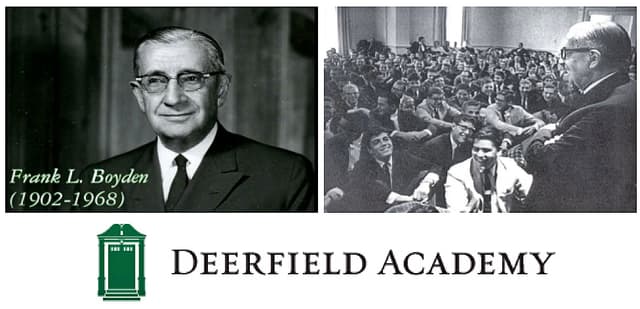 View original image
View original image


